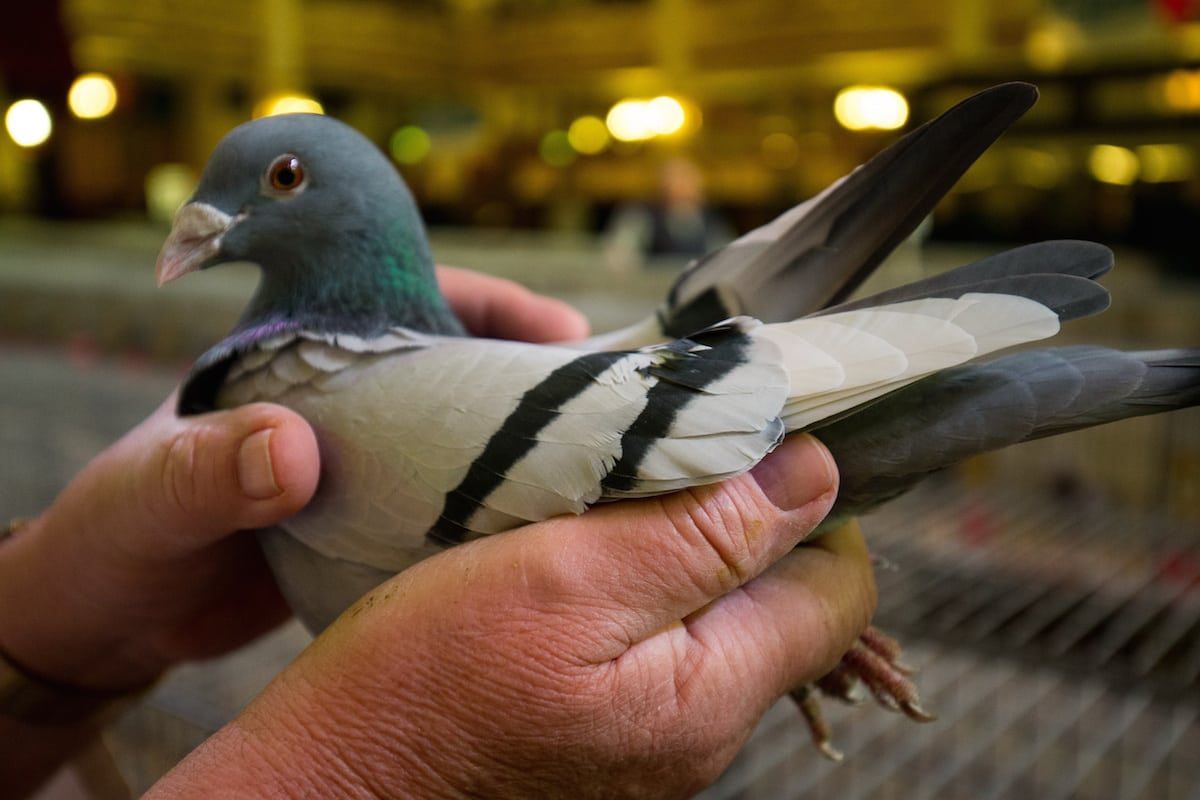
The humble pigeon is far more intelligent than previously thought and can even have abstract thoughts, reveals new research.
Rather than being bird brains, pigeons can understand both space and time, according to the study.
Not only can they discriminate these abstract concepts, but researchers found that pigeons seem to use a different region of the brain than humans and primates to do so.
In experiments, pigeons were shown a static horizontal line on a computer screen and had to judge its length or the amount of time it was visible to them.
Pigeons judged longer lines to also have longer duration and judged lines longer in duration to also be longer in length.
What that means, according to the researchers, is pigeons use a common area of the brain to judge space and time, suggesting that these abstract concepts are not processed separately.
Similar results have been found with humans and other primates.
The finding adds to growing recognition in the scientific community that lower-order animal species – such as birds, reptiles, and fish – are capable of high-level, abstract decision-making.
Professor Edward Wasserman, of the University of Iowa in the United States, said: “The cognitive prowess of birds is now deemed to be ever closer to that of both human and non-human primates.”
Prof Wasserman – who has studied intelligence in pigeons, crows, baboons, and other animals for more than four decades – explained: “Those avian nervous systems are capable of far greater achievements than the pejorative term ‘bird brain’ would suggest.”
He says humans are able to perceive space and time, even without the aid of inventions such as a watch or a ruler.
Prof Wasserman explained that the region of the brain that helps humans make those abstract concepts more tangible is the parietal cortex, part of the cerebral cortex and the outermost layer of the brain.
The cerebral cortex is known to be the location of higher thought processes, including speech and decision-making, and the four lobes that comprise it, including the parietal cortex, process different types of sensory information.
But Prof Wasserman said the pigeon brain doesn’t have a parietal cortex, or at least one developed enough to be distinct.\
So, he said the birds must employ another area of the brain to discriminate between space and time – or perhaps there’s a common evolutionary mechanism in the central nervous system shared by early primates and birds.
To find out, Prof Wasserman and his team put pigeons through a series of tasks called the “common magnitude” test.
The birds were shown on a computer screen a horizontal line either 6cm or 24cm long for either two seconds or eight seconds. If they correctly reported – by pecking one of four visual symbols – the length or the duration of the line, they received food.
The test then became more complex as the researchers introduced additional line lengths, thus adding greater variability in judging whether a line was short or long; they also presented the line to the pigeons for either a shorter or longer duration.
Prof Wasserman said: “The task now forces pigeons to process time and space simultaneously because they cannot know on which dimension they’re going to be tested.”
The researchers found that the length of the line affected the pigeons’ discrimination of line duration, and the duration of the line affected the pigeons’ discrimination of line length.
Prof Wasserman said the interplay of space and time paralleled research done with humans and monkeys and revealed the common neural coding of the two physical dimensions.
Researchers previously believed that the parietal cortex was the locus of the interplay.
But because pigeons lack an apparent parietal cortex, Prof Wasserman’s findings suggest that isn’t always the case.
Study first author Benjamin De Corte, a third-year graduate student who helped design and execute the experiments, says the results show pigeons process space and time in ways similar to humans and other primates.
He said: “The cortex is not unique to judging space and time.
“The pigeons have other brain systems that allow them to perceive these dimensions.”
The findings were published online by the journal Current Biology.
https://www.thelondoneconomic.com/news/antibiotic-resistance-began-farms/30/11/
https://www.thelondoneconomic.com/news/environment/rubbish-beaches-10-per-cent-worst-ever-levels-prompting-calls-litter-tax/30/11/